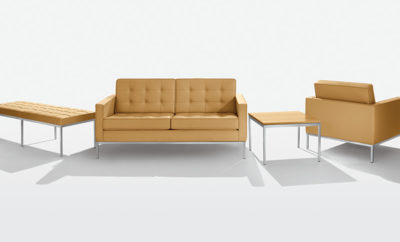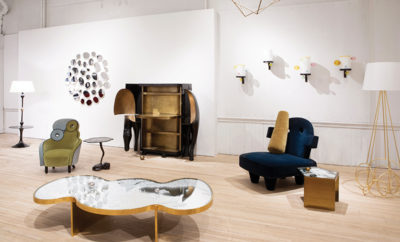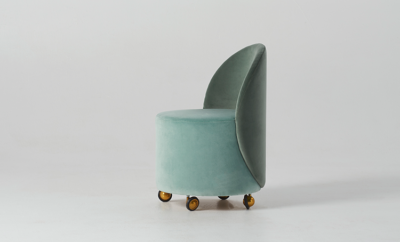 Tomáš Brabec Photo
Tomáš Brabec Photo
Design
Beyond Glass: Prague’s Tadeáš Podracký
TADEÁŠ PODRACKÝ’S STUDIO IS LOCATED in a hulking eleven-story office building in a suburb of Prague, about twenty-five minutes southwest of the city’s historic center. Once used to produce aircraft instruments, the austere, mustard-colored high-rise is occupied today by artists and various businesses of a creative persuasion. Belowground, a nuclear bunker—a remnant of the Cold War— plays host to occasional parties.
Even on one of Prague’s typical gray days the view from the twenty-eight-year-old designer’s ninth-floor space is expansive. Adding interest to what otherwise feels like an ordinary office, the studio’s horizontal windows look out onto hillsides dotted with houses, the Prague-Velká Chuchle horse-racing track, the Radotínský Bridge (one of the Czech Republic’s longest), and the Vltava River, a vast panorama that speaks to Podracký’s own wide view. “To be successful, I have to think globally. The Czech scene is small,” the designer says. “I want [my work] to be recognizable globally. I know it’s ambitious thinking, but I think it’s necessary.”

Decorative jars from Tadeáš Podracký’s Pineapples collection, 2014, crafted using free-blown and mold-blown glassmaking techniques. Anna Pleslová Photo
Podracký’s large glass objects have already attracted attention beyond the Czech Republic’s borders. His thesis project for Prague’s Academy of Arts, Architecture and Design, where he studied in the glass studio, was presented at the London Design Festival in 2014 and again last year at MAISON&OBJET Paris. Called Dioscuri, the two trophy cups, featuring ebony handles and layered with leather, are dedicated to Greek mythology’s heroic Dioscuri brothers, their shapes derived from those of Panathenaic amphoras and lebes gamikos. His Jaars, Pineapples, and Finland Objects—the last, a series of vessels he created during the 2011 Glass is Tomorrow workshop in Finland—have been exhibited at Mint in London’s Brompton Design District. Another project, designed in collaboration with his girlfriend, jewelry designer Markéta Kratochvílová, is called Skywalkers, a set of cosmic, limited-edition lighting objects made from golden steel and cut glass. They are being sold through New York’s Chamber gallery, where the works are described as “part art deco, part C-3PO.”
Born in 1989, the year that Communism fell in what was then Czechoslovakia, Podracký, who wanted to be a painter as a child, is part of what has been called the revolution generation. He says that after the revolution, people really believed that with new opportunities, “our generation could reach a new level. They said, ‘you will be the best.’ I think this influenced a lot of people.”
Following university, which included six months studying monumental sculpture at Prague’s Academy of Fine Arts and another half-year in the fine arts department at the School of Visual Arts in New York, Podracký worked briefly as a designer at Moser, the 160-year-old Czech crystal glassware company. He then spent several months at the Yuhang Rong Design Library in China, where his exploration of traditional Chinese crafts and materials led to contemporary works referencing traditional culture, practices, and objects, such as Ming-era chairs and oil-paper umbrellas. During a three-month residency last year at the Creative Glass Center of America at WheatonArts, in Millville, New Jersey, he created American GlassAge, a series of objects made from and inspired by mountains of industrial glass waste from a recently shuttered local glassworks. Now, settled in his Prague studio, where he typically spends ten-hour days, he is exploring new territory. “I will continue doing glass pieces, but it isn’t my main focus now,” he says. “I’ve moved into furniture and other interior pieces.”
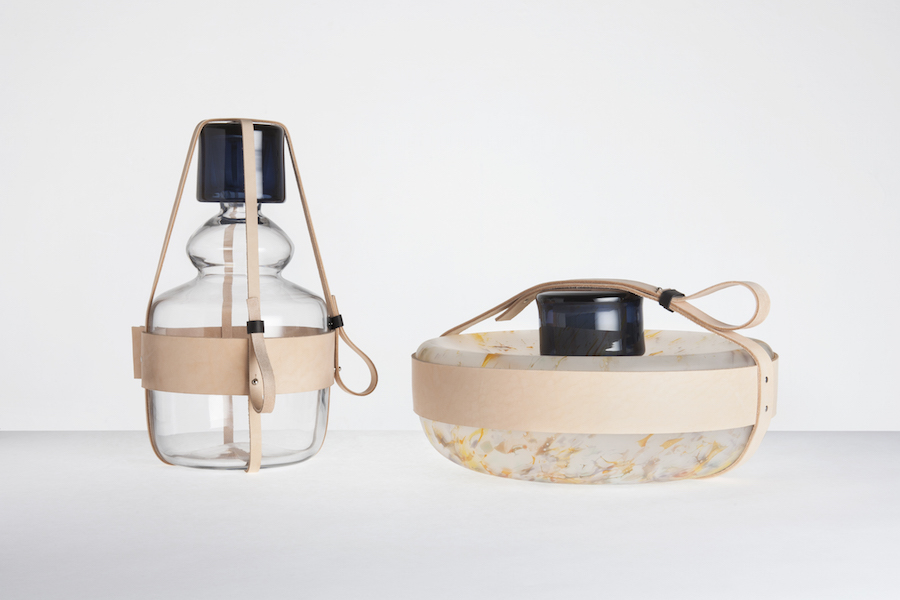
In 2011 Podracký participated in the Glass is Tomorrow workshop in Finland and created Finland Objects in glass and leather, drawing inspiration from the wild nature that surrounded him in the small town of Nuutajarvi in Finland. Anna Pleslová Photo
For Podracký, the intellectual component has always been an important part of his process: “This is why I love this work,” he says. Once an idea is generated, his starting place is research: historic cultures, artifacts, and materials. “I’m uncovering the development from the history to the modern. What happened [in between]? What influences were there? I’m building the idea behind the object first.”
Podracký always starts with his hands: “I can’t see scale and volume with the computer,” he says. His studio is two rooms—“one clean and one messy, I need both”—and models, mainly in cardboard, are scattered throughout. Among them is the model for a chair he designed for the 2016 Designblok, Prague’s premier annual design event. Made from jagged pieces of beechwood (resembling shards of glass) that Podracký cut with a handsaw and painted black, the finished chair is elegant and rather Edward Scissorhands-esque. “The long-term theme in my work is what drives individuals to create art, design, or architecture? What role does human instinct play and what is just cultural expectations?”
A recent project is a trio of sculptural speakers commissioned by, and for, Kotva, a landmark department store built in the 1970s in the brutalist style in the center of Prague; the project’s main source of inspiration was the building’s shape. “To me, the building looks like a huge rock, so I conceived these as three stones.” With a surface of black glass and featuring gold-plated metal detailing, two stand tall while one is wide and low to the ground. Together they look like a kind of contemporary Stonehenge. “I wanted to do something that looks like fine art,” he says. “It’s a composition in space. Viewers can walk around it, interact with it. It is interesting from every point of view.”
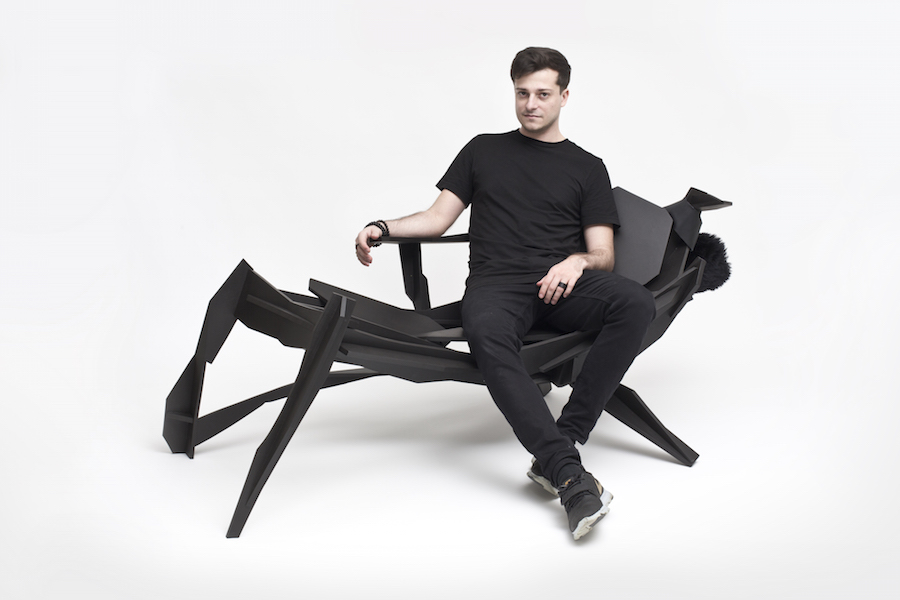
Podracký sits in his beechwood Sculptural lounge chair, which he designed for Prague’s 2016 Designblok. Tomáš Brabec Photo
These art speakers, as he is calling them—“because my approach is from art”—mark Podracký‘s move toward more functional pieces. Yet, continuing to embrace his conceptual ways, he is bringing art into new contexts and further developing a style all his own.


